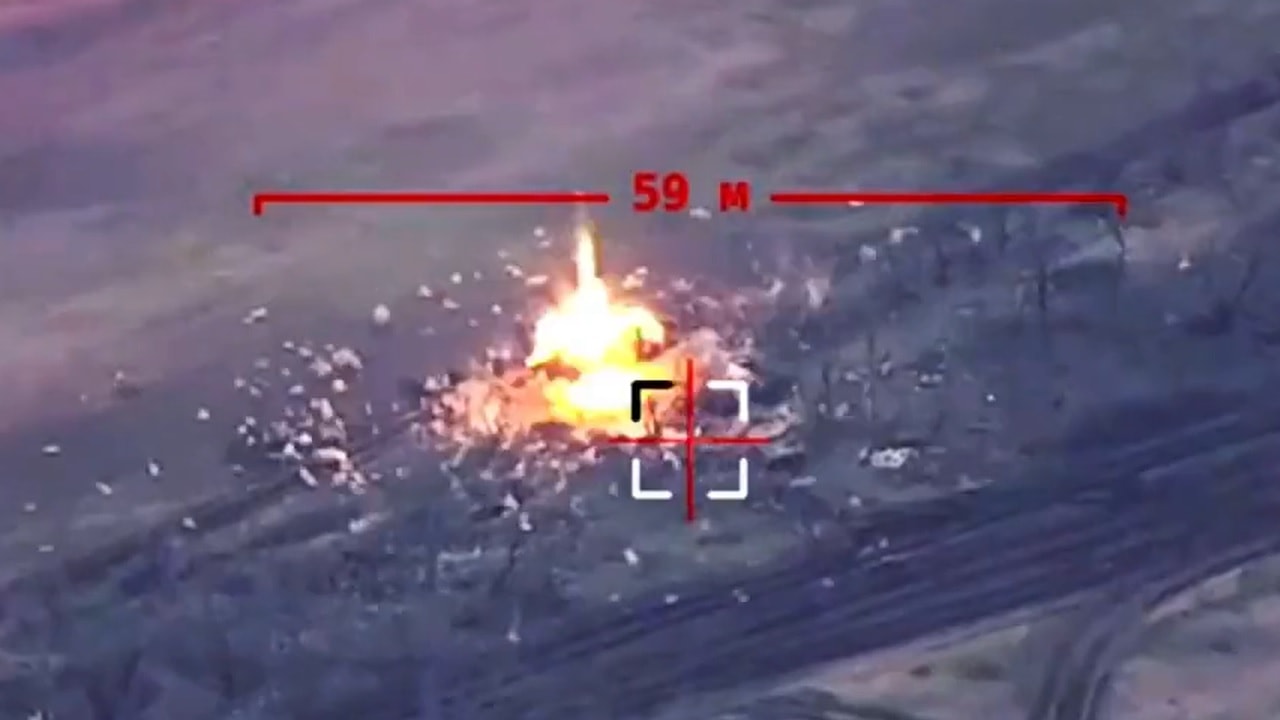Since nearly the war’s outset, enterprising Ukrainian soldiers began raising money for themselves and their units by selling messages written on artillery shells.
In a video posted last September by Ukraine Weapons Tracker (@UAWeapons), a Ukrainian artilleryman can be seen penning one such message on a 122mm projectile while it’s still in its shipping crate.
The significance, however, is noted by @UAWeapons, namely “in [the] video, we identified Iranian OF-462 122mm projectiles.” The thread continues documenting their evidence and theory as to how this shell fell into Ukrainian hands.
In the footage released by Ukraine Weapons Tracker on Twitter, hardly legible markings resemble ammunition crates typically sent by Iran.
The Twitter handle published four side-by-side photos to illustrate how this crate mirrors an Iranian Toophan crate delivered to Iraq in 2017.
Bought or Seized?
As early as May of last year, there was reporting that Ukraine was receiving Iranian weaponry. The source, however, was not Iran. Instead, the weapons took a far more circuitous route. Apparently intended for Houthi rebels in Yemen before their seizure by the U.S. and subsequent shipment to Ukraine.
In February, the Wall Street Journal reported that the U.S. military was weighing whether or not to send Ukraine some of the thousands of Iranian weapons it had seized bound for Yemen.
In addition to the weaponry, more than one million rounds of ammunition had also been intercepted by the U.S. military. America and other North Atlantic Treaty Organization (NATO) members have been collaborating to ensure Kyiv receives the equipment it needs in a timely manner.
Some of the weapons the White House has signaled it would provide to Ukraine will reportedly diminish the U.S. military’s already low stockpile. Therefore, providing Kyiv with Yemen-bound Iranian weapons would appear to be a better solution.
This circulated video, however, was published back in the fall. According to the Twitter handle, no interception of this type of cargo being intercepted in this time period was ever reported. Perhaps a third party purchased these weapons from Tehran and sold them to Ukraine. Or, perhaps an unreported weapons seizure resulted in the weapons delivery. Regardless, Iranian-designed munitions, drones and other projectiles appear to be aiding both sides of Russia’s ongoing invasion of Ukraine.
Iran delivers weapons to Moscow and its regional Mideast allies
Tehran has been providing Moscow with the lethal drones it uses to target critical infrastructure, personnel and even residential buildings in Ukraine. For months, the Iranian regime denied providing its killer unmanned aerial vehicles (UAVs) to Moscow, but ultimately admitted to this transaction earlier this year.
According to U.S. defense officials, Iranian-made Shahed-136 and Shahed-131 attack drones in addition to Mohajer-6 UAVs have been used in Ukraine.
In addition to providing drones to aid Moscow’s war efforts in Ukraine, Iran consistently delivers military equipment and weaponry to its region-wide proxy affiliates. In January, the U.S. Navy and the French military seized thousands of assault rifles and nearly half a million rounds of ammunition headed toward Yemen to support the Iranian-aligned Houthi rebels. U.S. Central Command confirmed the interception, noting that this seizure was “one of the four significant illicit cargo interdictions over the past two months” to Yemen.
#Ukraine: It appears that the Ukrainian army started to use Iranian-made artillery ammunition – in a video from Ukraine we identified Iranian ???????? OF-462 122mm projectiles.
Though some Iranian weapons were already observed, this case is worth paying attention and we will tell why: pic.twitter.com/Ru1k4RyP0k— ???????? Ukraine Weapons Tracker (@UAWeapons) September 2, 2022
Maya Carlin, a Senior Editor for 19FortyFive, is an analyst with the Center for Security Policy and a former Anna Sobol Levy Fellow at IDC Herzliya in Israel. She has by-lines in many publications, including The National Interest, Jerusalem Post, and Times of Israel. You can follow her on Twitter: @MayaCarlin.

